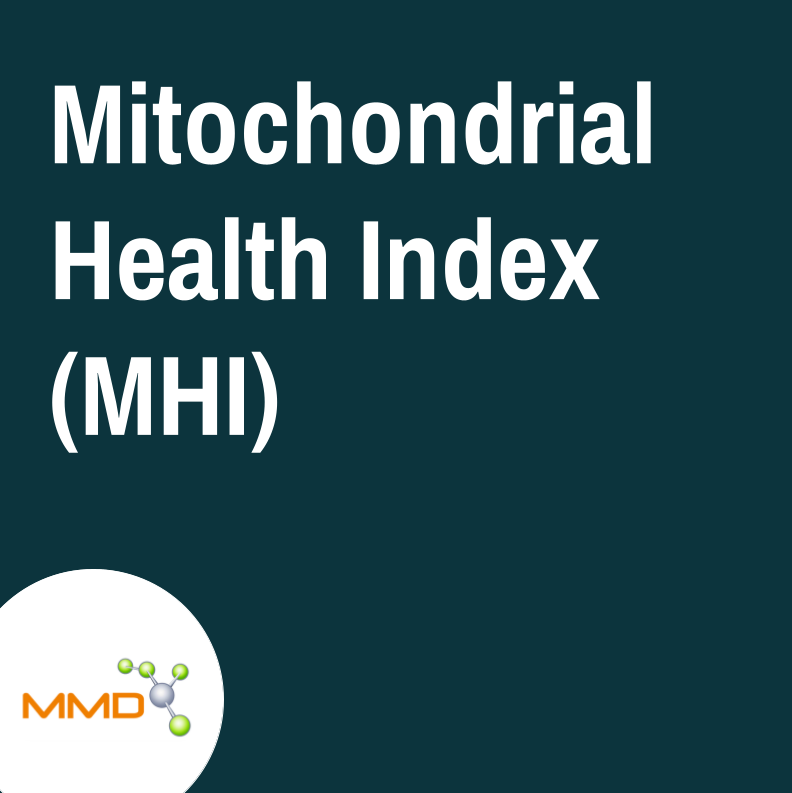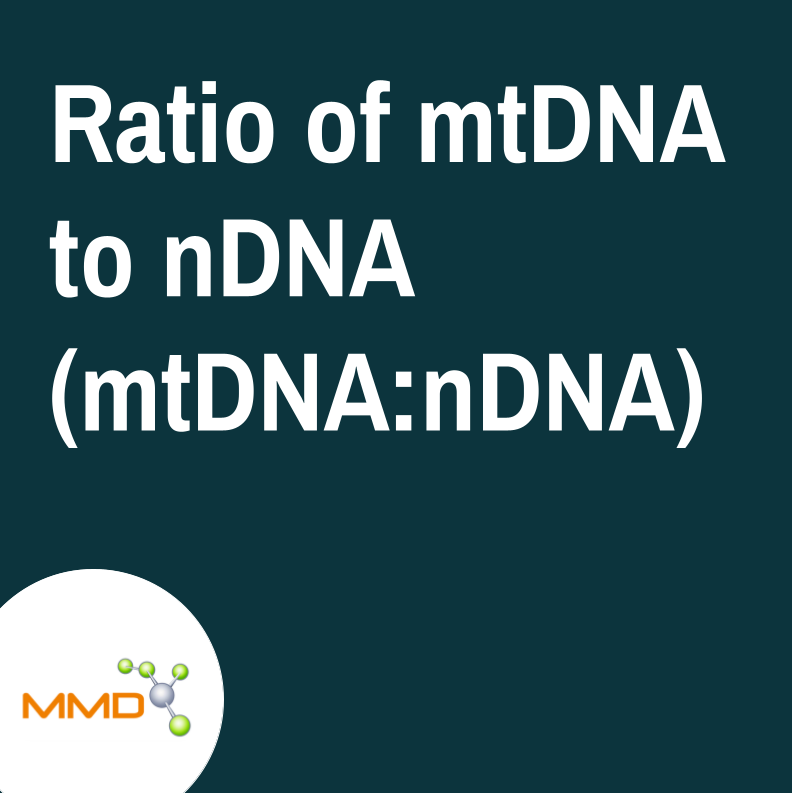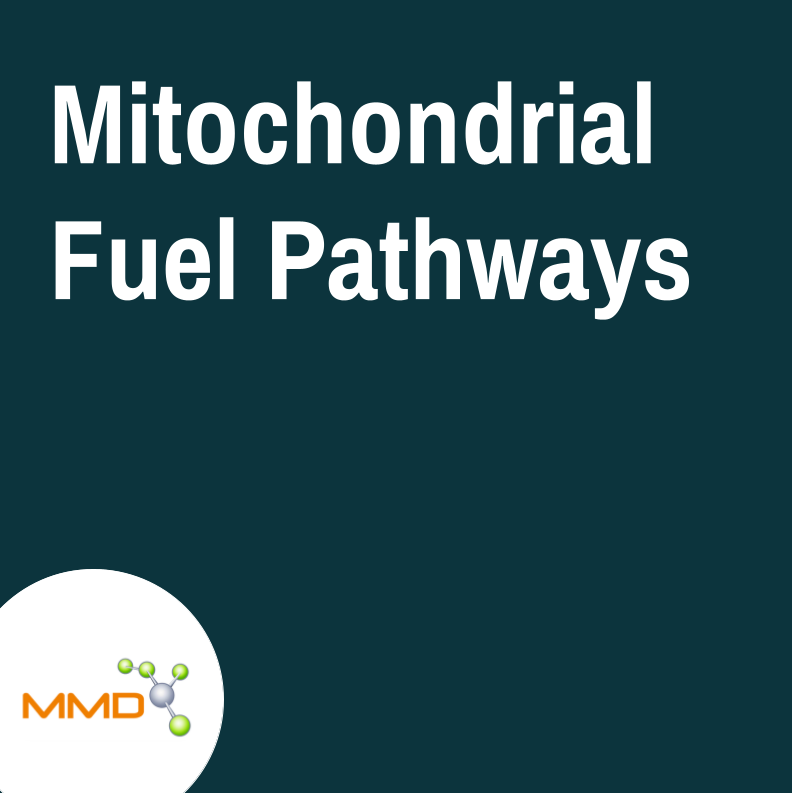Short summary of Mitochondrial tests
ATP Profile
The ATP Profile determines the total ATP production and allows for a quantitative comparison of the cells’ energy engines – mitochondria and glycolysis – in a basal state.
The ATP Profile consists of the following markers:
- Total adenosine triphosphate (ATP)
- Mitochondrial ATP capacity
- Glycolytic ATP capacity
- Reserve ATP capacity
Mitochondrial Health Index
The Mitochondrial Health Index (MHI) can be used to measure improvement in mitochondrial function, and to help identify where the block to optimal functioning might lie.
The MHI consists of the following markers:
- Basal respiration rate
- mitochondrial ATP turnover
- proton leak
- maximum respiration rate
- reserve capacity
- non-mitochondrial rate
- calculation of the overall Mitochondrial Health Index.
Supplementary Biomarkers
Ratio of mtDNA to nDNA (mtDNA:nDNA)
Mitochondria have their own genome – their own DNA. The ratio of mtDNA (mitochondrial DNA) to nDNA (nuclear DNA) makes it possible to calculate the number of mitochondria per cell. This ratio can be used as a marker of mitochondrial dysfunction, because a decline indicates that replication (mitobiogenesis) is not occurring, and that mitochondrial numbers are decreasing. This is a sign of cellular distress that may be due to toxins, infection, inflammation, or a number of different causes.
Various metabolic and neurodegenerative diseases are associated with reduced numbers of mitochondria, which also lead to ATP deficiency:
https://pediaa.com/difference-between-mitochondrial-dna-and-nuclear-dna/
PGC-1α
PGC-1α (Peroxisome Proliferator-Activated Receptor Gamma Coactivator-1Alpha) is of central importance for the induction of mitochondrial biogenesis: the development of new mitochondria. This makes it a key enzyme for our energy metabolism.
PGC-1α is also a transcriptional coactivator, meaning it interacts with many transcription factors that are involved with numerous biological processes: it is a regulator of thermogenesis, gluconeogenesis, the beta-oxidation of fatty acids, of hormone metabolism and our antioxidative system.
The level of this in the mitochondria compared to other indicators is therefore very significant and instructive.
One recommended combination of tests is mtDNA:nDNA and PCG-1α, as these cast light on each other very well, both being involved with mitobiogenesis
Nrf-2
NRF-2, nuclear factor erythroid 2-related factor 2, is the master regulator of our antioxidant system to protect cells from reactive oxygen species.
Nrf-2 activates Phase II detoxification – particularly glutathione-S-transferase and other antioxidant enzymes, including SOD-2, catalase and glutathione peroxidase. It is crucial to have adequate levels of this in the mitochondria.
Nrf-2 and mt4977del are recommended to be done together, as they are both very connected with oxidative stress
Lactate/pyruvate ratio
Glucose in cells is converted to pyruvate, and can then be converted to lactate in the cytoplasm or transported into the mitochondria via the pyruvate dehydrogenase complex (PDC). The higher the value of lactate compared to pyruvate, the more glycolysis is occurring. A higher level of pyruvate compared to lactate is a prerequisite for successful transfer of substrates in the mitochondria for oxidative phosphorylation.
An increase in lactate may signify impaired mitochondrial function, or the result of excess glucose increasing glycolytic flux to an extent that preferentially shunts pyruvate to lactate instead of entering the mitochondria. Conversion of pyruvate to lactate blocks further ATP production. So the pyruvate/lactate ratio gives an important indication of how efficiently the mitochondria are working.
The pyruvate/lactate ratio can also provide information on the extent to which the mitochondria are able to utilise fatty acids for energy production. This calculation involves comparing the rate of oxygen consumption to the rate of extracellular acidification alongside the pyruvate/lactate ratio.
**must be ordered at same time as M2 Mitochondrial Health Index (or M3)**
Mitochondrial 4977 deletion mutant (mt4977del)
This test measures whether any sections of mtDNA have been damaged and how many. Sections of missing DNA is called ‘a deletion’, and a well-researched marker for oxidative stress is the 4977 deletion.
This test uses the number of copies of this 4977 deletion to assess how extensive the oxidative stress is. The damage is reversible – once impaired mitochondria have been removed, new healthy mitochondria can replace them.
Mitochondrial Fuel Pathways
This assay determines dependence, capacity, and flexibility of cells to burn (oxidize) one of the three fuels for energy production using the mitochondria: glucose, glutamine, or fatty acids.
NOTE: This test must be ordered alongside the MHI (M2 or M3), Ratio of mtDNA to nDNA (M4), + Mitochondrial 4977 deletion mutant (mt4977del) (M9), or combination (M10)








